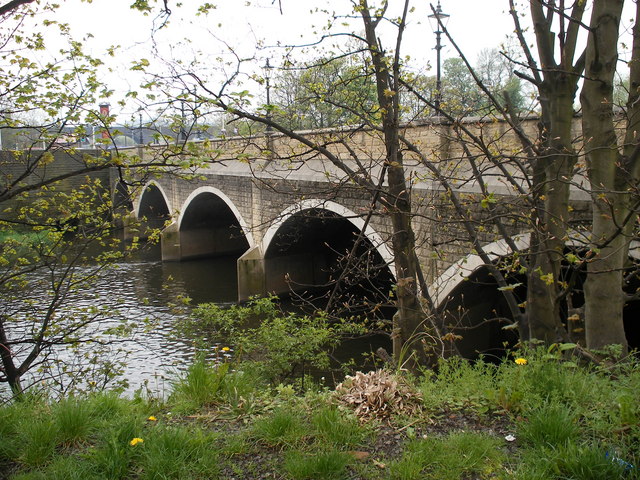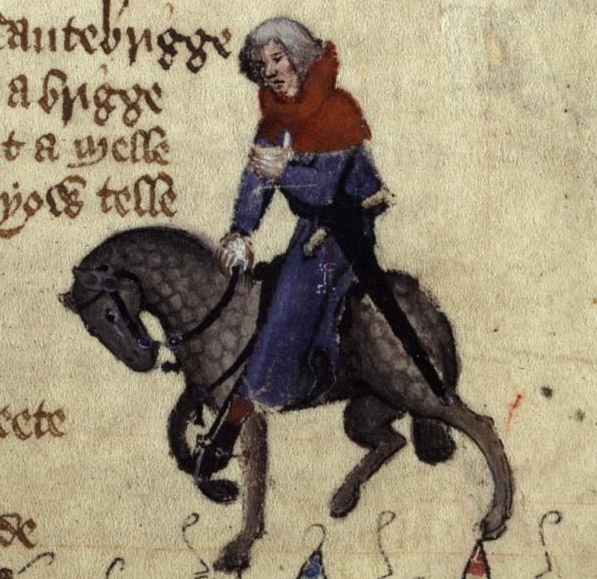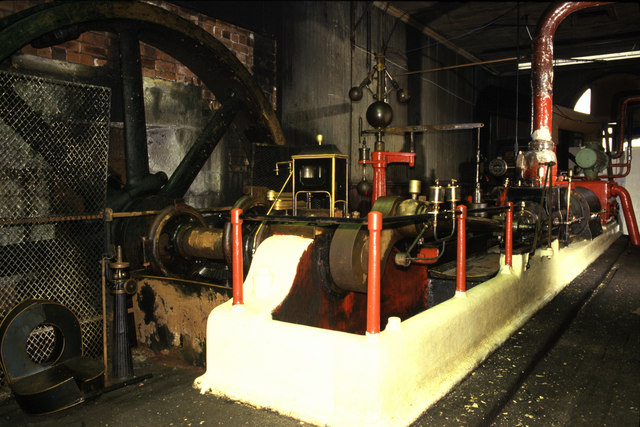|
Graveship
Graveship ( ang, grafansċip) was a subdivision of a medieval estate each was under a grave who was selected every year. An example is the manor of Wakefield, which was managed with 12 graveships. The OED defines a graveship as: "In the West Riding of Yorkshire: a district, in some instances a subdivision of a large parish, in others comprising a number of parishes; so called as having formerly been administered by a grave or a body of graves." Grave The term has ancient origins, Morehouse in "The History and Topography of the Parish of Kirkburton and of the Graveship of Holme" defines Grave (prepositus in Latin deeds) as probably derived from the Anglo-Saxon Lenere or the German Graf (Middle-German ''grave'') and in that sense means an officer, whose duty it was to collect the lord’s rents and/or execute administrative orders in the graveship. In most of England, the official would have been termed a reeve but in the manor of Wakefield, he was termed a grave and was selected at ... [...More Info...] [...Related Items...] OR: [Wikipedia] [Google] [Baidu] |
Horbury
Horbury is a town in the City of Wakefield in West Yorkshire, England. Historically in the West Riding of Yorkshire, it is situated north of the River Calder about three miles (5 km) south west of Wakefield and two miles (3 km) to the south of Ossett. It includes the outlying areas of Horbury Bridge and Horbury Junction. At the 2001 census the Horbury and South Ossett ward of Wakefield Metropolitan District Council had a population of 10,002. At the 2011 census the population was 15,032. Old industries include woollens, engineering and building wagons for the railways. Horbury forms part of the Heavy Woollen District. History Toponymy The name Horbury is attested in 1086 as ''(H)orberie''. It is derived from Old English ''horu'' 'dirty land' and ''burh'' (in its dative form ''byrig''), which translates as 'filthy fortification' or 'stronghold on muddy land'. Other spellings include Orberie, Horbiry and Horberie. The name possibly referred to a fortification near an o ... [...More Info...] [...Related Items...] OR: [Wikipedia] [Google] [Baidu] |
Wakefield
Wakefield is a cathedral city in West Yorkshire, England located on the River Calder. The city had a population of 99,251 in the 2011 census.https://www.nomisweb.co.uk/census/2011/ks101ew Census 2011 table KS101EW Usual resident population, West Yorkshire – Wakefield BUASD, code E35000474 The city is the administrative centre of the wider City of Wakefield metropolitan district, which had a population of , the most populous district in England. It is part of the West Yorkshire Built-up Area and the Yorkshire and The Humber region. In 1888, it was one of the last group of towns to gain city status due to having a cathedral. The city has a town hall and county hall, as the former administrative centre of the city's county borough and metropolitan borough as well as county town to both the West Riding of Yorkshire and West Yorkshire, respectively. The Battle of Wakefield took place in the Wars of the Roses, and the city was a Royalist stronghold in the Civil War. Wake ... [...More Info...] [...Related Items...] OR: [Wikipedia] [Google] [Baidu] |
Graf
(feminine: ) is a historical title of the German nobility, usually translated as "count". Considered to be intermediate among noble ranks, the title is often treated as equivalent to the British title of "earl" (whose female version is "countess"). The German nobility was gradually divided into high and low nobility. The high nobility included those counts who ruled immediate imperial territories of "princely size and importance" for which they had a seat and vote in the Imperial Diet (Holy Roman Empire), Imperial Diet. Etymology and origin The word derives from gmh, grave, italics=yes, which is usually derived from la, graphio, italics=yes. is in turn thought to come from the Byzantine Empire, Byzantine title , which ultimately derives from the Greek verb () 'to write'. Other explanations have been put forward, however; Jacob Grimm, Jacob and Wilhelm Grimm, while still noting the potential of a Greek derivation, suggested a connection to got, gagrêfts, italics=yes, m ... [...More Info...] [...Related Items...] OR: [Wikipedia] [Google] [Baidu] |
Reeve (England)
In Anglo-Saxon England, the reeve was a senior official with local responsibilities under the Crown, such as the chief magistrate of a town or district. After the Norman conquest, it was an office held by a man of lower rank, appointed as manager of a manor and overseer of the peasants. In this later role, historian H. R. Loyn observes, "he is the earliest English specialist in estate management." Anglo-Saxon England Before the Conquest, a reeve (Old English '' ġerēfa''; similar to the titles '' greve''/''gräfe'' in the Low Saxon languages of Northern Germany) was an administrative officer who generally ranked lower than the ealdorman or earl. The Old English word ''ġerēfa'' was originally a general term, but soon acquired a more technical meaning. Land was divided into a large number of hides—an area containing enough farmable land to support one household. Ten hides constituted a tithings, and the families living upon it (in theory, ten of them) were obliged to underta ... [...More Info...] [...Related Items...] OR: [Wikipedia] [Google] [Baidu] |
Alverthorpe
Alverthorpe is a suburb of, and former village in Wakefield, West Yorkshire, England. History After the start of the Industrial Revolution woollen and worsted yarns were spun and woollen and worsted cloth woven in the mills and factories that were built in the valley. Rope and twine were also manufactured. In 1830 the township's population was 4,590 and in 1870 it had 1,423 houses and the population had risen to 6,645. A. Talbot & Sons manufactured sweets for many years in a factory with a landmark chimney which was originally a rag mill. The company originated in 1890, selling wholesale groceries from a horse-drawn vehicle, but moved into boiled sweet manufacture when its sweet supplier, John Kay of Flushdyke, retired and gave it his recipes. The company's humbugs, mint imperials, toffees and Yorkshire mixtures became popular throughout Yorkshire and further afield. The Talbots ran the business until the mid-1960s, when it was sold to Victory V lozenges. In the early 20t ... [...More Info...] [...Related Items...] OR: [Wikipedia] [Google] [Baidu] |
Hipperholme
Hipperholme is a village in West Yorkshire, England, located between the towns of Halifax and Brighouse in the Hipperholme and Lightcliffe ward of the Metropolitan Borough of Calderdale. The population of this ward at the 2011 Census was 11,308. Geography Hipperholme is located at the crossroads of A58 road and A644 road, about east of Halifax town centre at a height of about a.s.l. (Christ Church). Lightcliffe is a village immediately east of Hipperholme. The boundary between the two is blurred, as there are places named after Lightcliffe with Hipperholme postal addresses. Other nearby places include Hove Edge in the south, Southowram and Northowram to the southwest and the northwest, respectively, and Shelf in the north. History Hipperholme is mentioned in the Domesday Book both as Hipperholme and as Huperun. Here the king held two carucates (an area of land used for taxation purposes which could notionally be ploughed by an eight-ox team in a season). Historicall ... [...More Info...] [...Related Items...] OR: [Wikipedia] [Google] [Baidu] |
Holme, West Yorkshire
Holme is a small rural village southwest of the town of Holmfirth and from Tintwistle on the edge of the Pennines in England. Between Holmbridge and Lane Village in West Yorkshire close to the border with Derbyshire. It lies on the boundary of the Peak District National Park, with some properties split to lie partially outside of it. Near the village is the Holme Moss radio transmitter that is above sea level and tall. The Pennine Way passes Southwest of the transmitter over Black Hill. The Peak District Boundary Walk runs through the village. The water seeping from the surrounding moorland is the source of the River Holme, which passes down through the Holme Valley to Huddersfield, where it flows into the River Colne. It is accessed by the A6024 Woodhead Road. The village contains a pub, called the Fleece, and a school. On 6 July 2014, Stage 2 of the 2014 Tour de France from York to Sheffield, passed through the village. The school The schoolroom was originally buil ... [...More Info...] [...Related Items...] OR: [Wikipedia] [Google] [Baidu] |
Holmfirth
Holmfirth is a town in the Metropolitan Borough of Kirklees, West Yorkshire, England, on the A635 and A6024 in the Holme Valley, at the confluence of the River Holme and Ribble, south of Huddersfield and west of Barnsley. It mostly consists of stone-built cottages nestled in the Pennine hills. The boundary of the Peak District National Park is south-west of the town. Historically part of the West Riding of Yorkshire, Holmfirth was a centre for pioneering film-making by Bamforth & Co., which later switched to the production of saucy seaside postcards. Between 1973 and 2010, Holmfirth and the Holme Valley became well known as the filming location of the BBC's situation comedy ''Last of the Summer Wine''. History The name ''Holmfirth'' derives from Old English ''holegn'' ('holly'), in the name of Holme, West Yorkshire, compounded with Middle English ''frith'' ('wood'). It thus meant 'the woods at Holme'. The town originally grew up around a corn mill and bridge in the 13t ... [...More Info...] [...Related Items...] OR: [Wikipedia] [Google] [Baidu] |
Ossett
Ossett is a market town in the City of Wakefield metropolitan borough in West Yorkshire, England. Historically part of the West Riding of Yorkshire, it is situated between Dewsbury, Horbury and Wakefield. At the 2011 Census, the population was 21,231.https://www.nomisweb.co.uk/census/2011/ks101ew Census 2011 table KS101EW Usual resident population, West Yorkshire – Ossett BUASD, code E35000387 Ossett forms part of the Heavy Woollen District. History Toponymy The name ''Ossett'' derives from the Old English and is either "the fold of a man named Osla" or " a fold frequented by blackbirds". Ossett is sometimes misspelled as "Osset". In Ellis' ''On Early English Pronunciation'', one of the founding works of British linguistics, the incorrect spelling is used. The British Library has an online dialect study that uses the spelling. One new alternative theory is that it is the place where King Osbehrt died after receiving fatal wounds when fighting the Great Heathen Army of the Vi ... [...More Info...] [...Related Items...] OR: [Wikipedia] [Google] [Baidu] |
Rastrick
Rastrick is a village in the county of West Yorkshire, England, between Halifax, 5 miles (8 km) north-east and Huddersfield, 4 miles (7 km) south. The population of the Calderdale Civil Ward at the 2011 census was 11,351. It is perhaps best known for its association, along with its neighbour Brighouse, 1 mile (2 km) north-east, with the Brighouse and Rastrick Brass Band. Along with Brighouse, it is part of Calderdale, but shares a Huddersfield postcode and phone number. Historically part of the West Riding of Yorkshire, the village is on an incline facing north-east, the Parish Church, is vertically in the middle. The area around the Parish Church is known as "Top o' t'Town" and the area around the Junction public house is known as "Bottom o' t'Town", this reflects the days when Rastrick had its own governance in the form of a Town Board whose Offices and lock-up were situated halfway between the two, on Ogden Lane. Remains of a fort have been found at Castle Hill, just ... [...More Info...] [...Related Items...] OR: [Wikipedia] [Google] [Baidu] |
Sandal Magna
Sandal Magna or Sandal is a suburb of Wakefield, West Yorkshire, England with a population in 2001 of 5,432. An ancient Human settlement, settlement, it is the site of Sandal Castle and is mentioned in the Domesday Book. It is south from Wakefield, north of Barnsley. The Battle of Wakefield was fought here in the 15th century during the Wars of the Roses. History Toponymy The name Sandal derives from the North Germanic languages, Early Scandinavian ' meaning sand or gravel and ', a meadow. Early history In the Domesday Book of 1086 Sandal is recorded as a ' (a village where barley was grown) in Wachefeld (Wakefield) where there was a church with a priest. The church was on the site of the present church of St Helen. William de Warenne, 2nd Earl of Surrey (1081–1138) was granted the Sandal estates in 1107 and began the building of Sandal Castle which became the baronial seat of the lords of the manor of Wakefield. In 1460, during the Wars of the Roses, the Richard Plantage ... [...More Info...] [...Related Items...] OR: [Wikipedia] [Google] [Baidu] |
Scammonden
Scammonden or Dean Head was a village close to Huddersfield, in the Dean Head Valley, England, before the valley was flooded to create Scammonden Reservoir in the 1960s. The M62 motorway crosses the dam wall and then passes through a cutting to the west over which Scammonden Bridge carries the B6114. The Chapel of St Bartholomew still exists, as does the old vicarage, which is now home to Scammonden Sailing Club. History Historically in the West Riding of Yorkshire, Scammonden or Dean Head was a township covering more than 2,000 acres. In the 1870s it had a church, a Baptist chapel, a national school, a post office and 190 houses. Industry in the village included cotton-spinning and woollen manufacture and there were freestone quarries. A motorway and dam across the Dean Head Valley was proposed in the early 1960s and work began in 1964. Most buildings in the village were demolished or submerged in the reservoir when it was filled in 1969. Geologists considered the church and s ... [...More Info...] [...Related Items...] OR: [Wikipedia] [Google] [Baidu] |





